Use your FAQ to Get Found by AI Search
Three pathways to make your support answers discoverable by ChatGPT, Perplexity, and AI search
Hey Adopter,
Your customers are already telling you exactly what they need help with. It's buried in support tickets, scattered across review sites, and hidden in chat logs. Meanwhile, AI search tools like ChatGPT, Perplexity, and Gemini are becoming increasingly important for traffic generation, with some sites seeing 67% increases in AI search referrals and doubled conversion rates.
The problem? Most business FAQs answer questions nobody asks, written in language nobody uses, structured in ways AI can't understand. AI search platforms prioritize “Trust Signals”, comprehensive information, authority signals, and usefulness over traditional SEO metrics, with only 2-3 sources typically getting cited in a "winner-takes-all" scenario.
This workflow transforms actual customer pain points into AI-discoverable solutions using Google's ecosystem. When you optimize for Google's AI using Google's tools, you're speaking their language from the inside. Three progressive approaches, all built on Gemini 2.5 Pro and NotebookLM.
Level 1: Basic FAQ Transformation Using Google's AI Stack
What You Need: Google account with access to Gemini 2.5 Pro and NotebookLM (both free)
Result: Customer-focused FAQs, structured exactly how AI expects to find them
Step 1: Load Customer Intelligence into NotebookLM
NotebookLM can process up to 50 sources and 25 million words, making it perfect for comprehensive customer feedback analysis. Upload everything customers have told you about problems:
Support ticket exports (PDF or text files)
Review compilations from Google, industry sites, app stores
Chat transcript summaries
Sales objection documentation
Social media feedback collections
Feature request logs
Step 2: Generate Initial FAQ Framework
NotebookLM has a built-in FAQ generation feature that's powered by Gemini. Click the "FAQ" button in the interface, but instead of accepting the default output, use this as your starting point for deeper analysis.
Step 3: Enhanced Analysis with Gemini 2.5 Pro
Take NotebookLM's initial FAQ output and paste it into Gemini 2.5 Pro with this prompt:
PROMPT 1: I have this initial FAQ analysis from my customer data. Review it and identify the 15 most critical customer pain points that need addressing. For each, create:
1. The exact question customers ask (under 100 characters)
2. A direct solution-first answer (under 75 words)
3. The primary search intent behind this question
4. Why this specific issue creates customer friction
Format as: Pain Point | Customer Question | Solution-First Answer | Search Intent | Friction Source
[Paste NotebookLM FAQ output here]
Step 4: Refine for Conversational Clarity
Take the output from Prompt 1 and use this chained prompt:
PROMPT 2: Using the FAQ analysis above, rewrite each answer to be more conversational and immediately actionable. Remove any corporate language. Each answer should:
- Start with the solution in the first sentence
- Explain the "why" in simple terms
- End with a next step if needed
Keep the same structure but improve clarity and tone.
Step 5: Organize by Customer Journey
Take the refined output and apply this final prompt:
PROMPT 3: Using the refined FAQs above, organize them into logical categories based on customer intent:
- Getting Started (first-time user questions)
- Solving Problems (troubleshooting and fixes)
- Advanced Usage (power user questions)
- Account Management (billing, settings, access)
For each category, write a brief description of what customers will find there. Also suggest the optimal order for presenting these FAQs within each category.
Step 6: Publish with Google-Friendly Structure
Create your FAQ page using the organized structure. Since you're optimizing for Google's ecosystem, link prominently from your main navigation and use clear, descriptive URLs.
Level 2: AI Search Optimized FAQs
What You Need: Same Google tools, plus basic understanding of search intent
Result: FAQs optimized specifically for how Google's AI search systems select and present content
Everything from Level 1, plus:
Step 7: Expand for AI Search Context
AI systems favor comprehensive coverage over brief answers. Take your Level 1 output and use this expansion prompt:
PROMPT 4: Using the organized FAQs above, expand the 10 most important questions into comprehensive answers that cover:
- Immediate solution (keep this first)
- Root cause explanation
- Prevention strategies
- Related issues customers might encounter
- When to escalate to human support
Keep each expanded answer under 200 words but ensure it thoroughly addresses the topic. Maintain the solution-first structure.
Step 8: Research Related Search Patterns
Gemini has direct access to Google's search ecosystem. Use this prompt to understand the broader search context:
PROMPT 5: For each of the expanded FAQs above, research and identify:
- 3-5 related questions people search for on this topic
- Common follow-up queries after the initial question
- Adjacent problems that often occur together
- Seasonal or trending variations of these searches
This will help me understand the full search intent landscape around each FAQ.
Step 9: Create Topic Clusters
Use the search research to build interconnected content:
PROMPT 6: Based on the search patterns identified above, create a linking strategy that connects related FAQs. For each main FAQ, specify:
- Which other FAQs should be linked from within the answer
- What anchor text to use for internal links
- Which FAQs could be grouped into comprehensive topic pages
- Opportunities to link to detailed help articles or tutorials
Present this as a clear linking map I can implement.
Step 10: Optimize for Visual Elements
AI search engines increasingly value content with visual indicators:
PROMPT 7: For each expanded FAQ, suggest opportunities to add visual elements that would help both AI understanding and user experience:
- Simple diagrams or flowcharts
- Screenshots or annotated images
- Step-by-step visual guides
- Decision trees for complex issues
Be specific about what each visual should show and why it would improve the FAQ's value.Level 3: Technical AI Search Optimization
What You Need: Basic HTML knowledge or developer access
Result: Maximum AI search visibility with a machine-readable structure that Google's systems prioritize
Everything from Levels 1 & 2, plus:
Step 11: Generate Google-Optimized Schema Markup
Since you're using Google's tools for optimization, have Gemini create markup that aligns with Google's preferences:
PROMPT 8: Using the final FAQ structure from above, generate FAQPage JSON-LD schema markup that includes:
- Complete Question and Answer pairs
- dateModified for content freshness signals
- Individual URLs for each FAQ (using anchors)
- Author information for expertise signals
- Keywords arrays for search context
Format it ready to paste into website headers. Make it Google Search Console friendly.
Step 12: Create AI Citation Optimization
Structure content for maximum citation probability:
PROMPT 9: For each FAQ, create an optimized version that includes authority signals Google's AI systems value:
- Clear author attribution for expertise topics
- Last updated timestamps for time-sensitive content
- Internal links using target keywords as anchor text
- External references to authoritative sources when helpful
- Clear source citations for any statistics or claims
Format each as a complete, citation-ready FAQ entry.
Step 13: Develop Monitoring and Optimization Strategy
PROMPT 10: Create a monitoring framework for tracking AI search performance:
- Key metrics to track weekly for FAQ visibility
- Methods to identify which FAQs get cited by AI tools
- Ways to detect emerging customer issues not yet covered
- A monthly optimization prompt template for continuous improvement
Include specific tools and techniques for each monitoring activity.
Step 14: Technical Implementation Checklist
PROMPT 11: Create a comprehensive technical implementation checklist that covers:
- Schema markup validation steps
- Mobile optimization requirements for FAQ pages
- Site speed considerations for FAQ loading
- XML sitemap integration for FAQ URLs
- Google Search Console setup for monitoring
- Integration with Google Analytics for performance tracking
Format as an actionable checklist with specific tools and validation methods.
The Google Ecosystem Advantage
When you optimize for Google's AI search using Google's own tools, you're working from the inside. Gemini 2.5 Pro understands Google's search preferences because it's part of the same ecosystem. NotebookLM processes documents the way Google's systems expect. Your schema markup aligns with what Google Search Console validates.
Most businesses create FAQs in isolation, then hope AI systems find them. This approach builds FAQs using the same tools that will ultimately evaluate and cite them.
Level 1 makes you discoverable in Google's ecosystem.
Level 2 optimizes for how Google's AI selects content.
Level 3 structures everything exactly how Google's systems prefer to read and understand information.
Your customer data already contains the answers people need. Process it through Google's AI tools, structure it how Google expects, and watch Google's AI search systems start citing your business as the authoritative source.
Adapt & Create,
Kamil



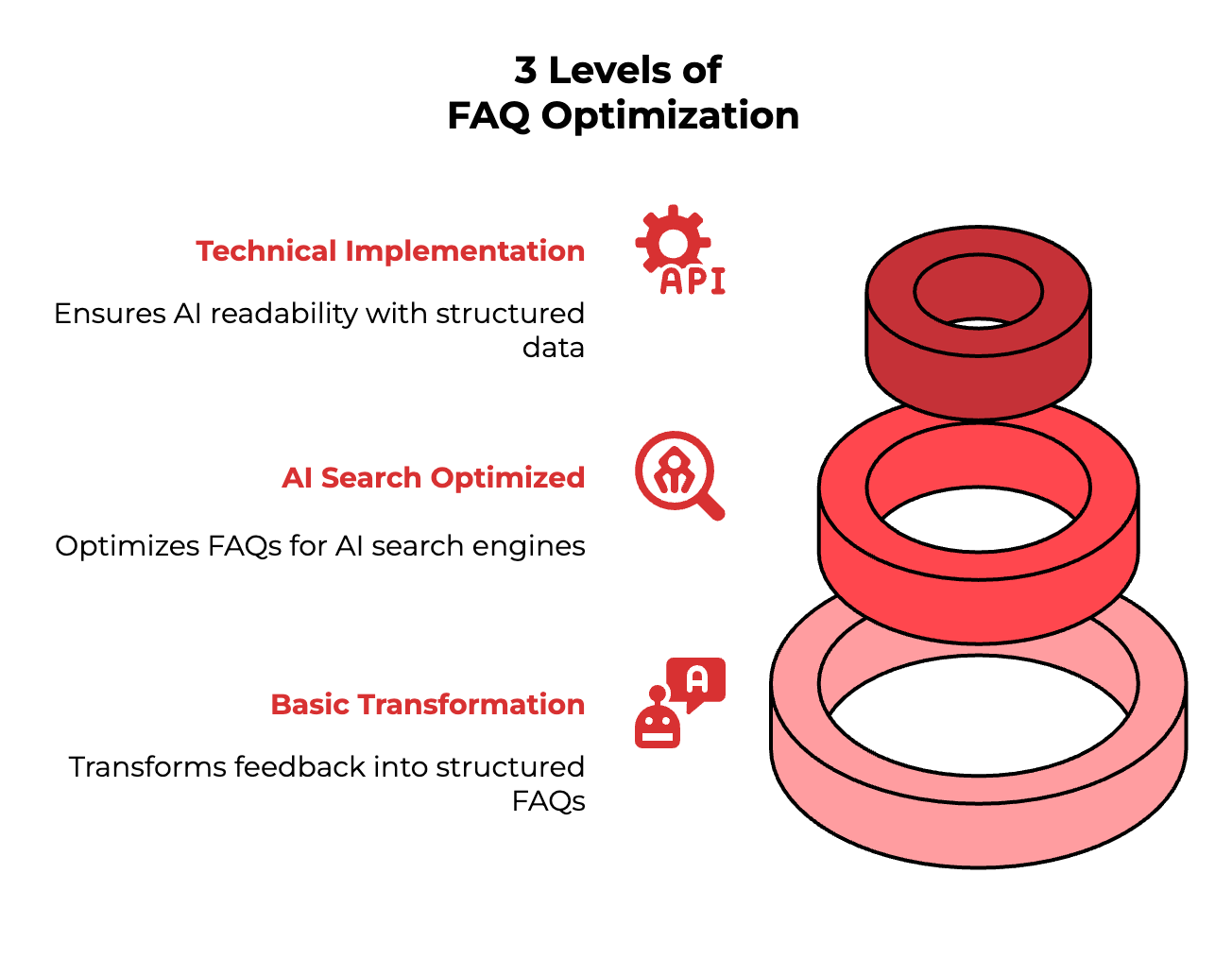

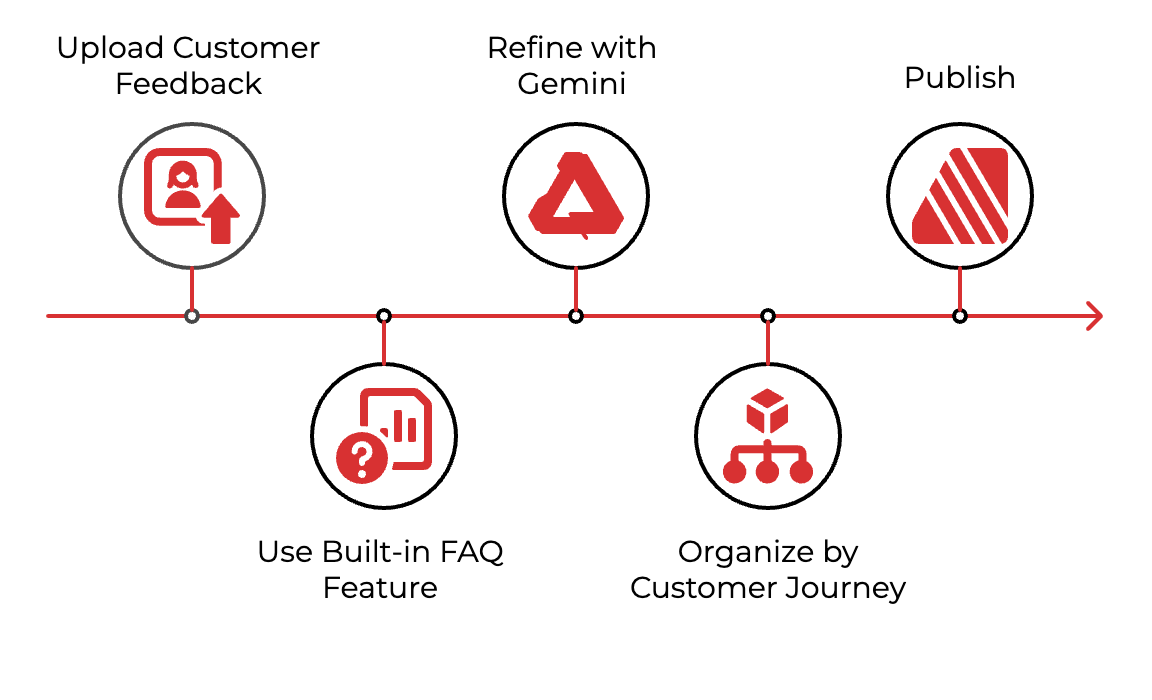
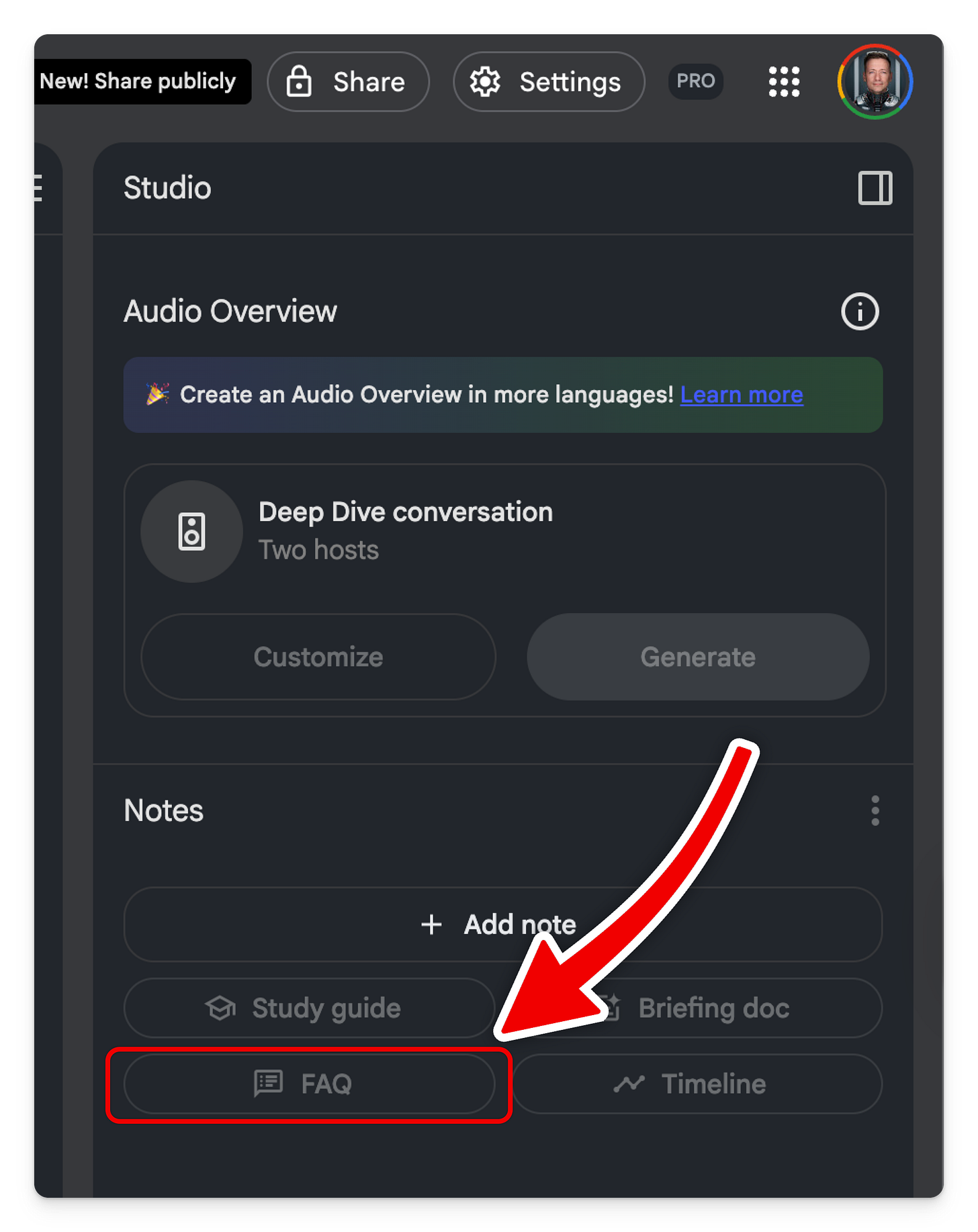

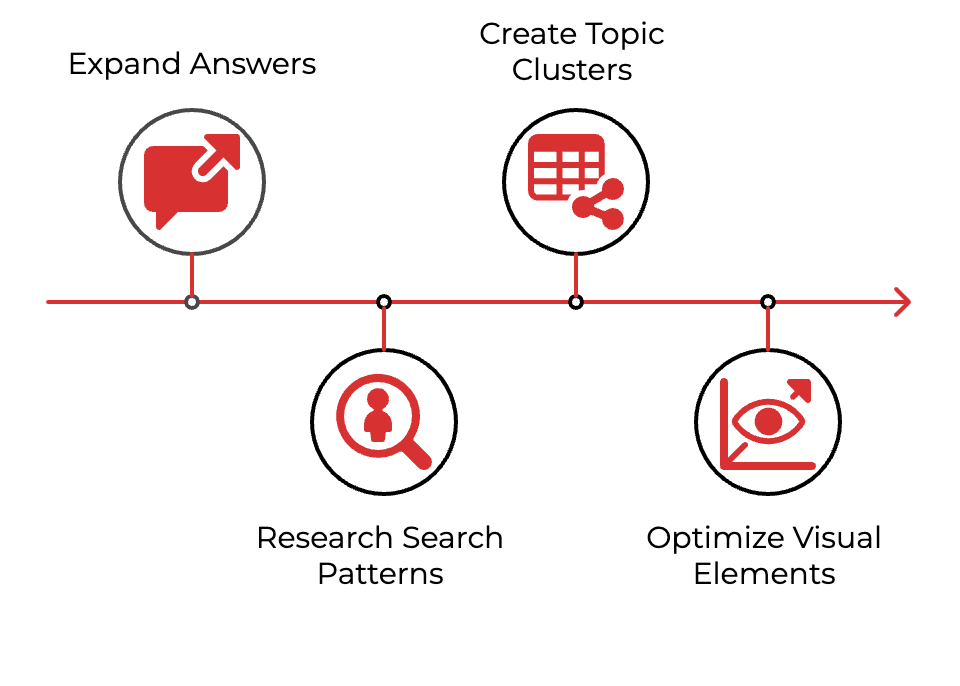
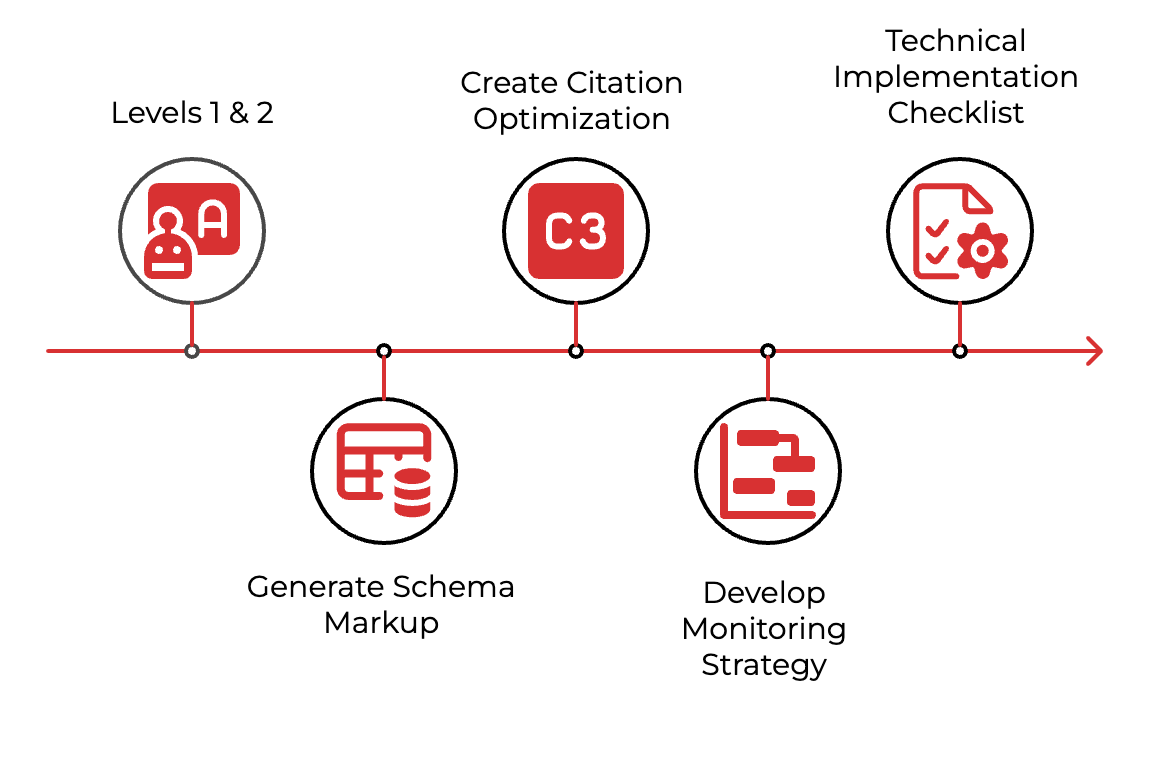
This is so helpful! Thank you! I’m learning so much about how to restructure your business for ai.. it’s incredible actually!
Thank you for this. I’m quite excited to put this in motion! Woot woot. 🥳